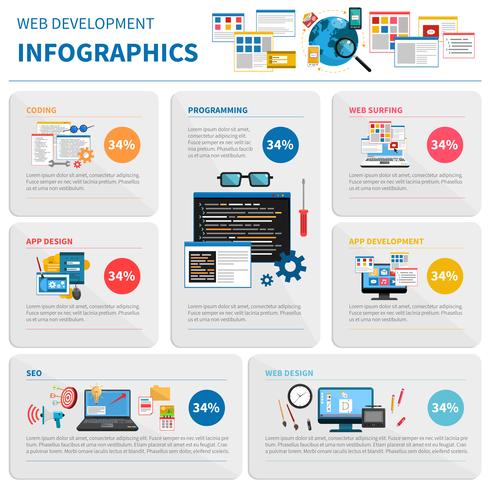Join Us As We Start A Journey Through Time, Exploring The Development Of Web Site Design And Exactly How It Has Actually Impacted The Electronic Landscape
Join Us As We Start A Journey Through Time, Exploring The Development Of Web Site Design And Exactly How It Has Actually Impacted The Electronic Landscape
Blog Article
Authored By-Johansen Vangsgaard
In the past, sites were basic and focused on details. Navigation was straight, and design was for desktop computers. Now, customer experience is essential. Data overviews layouts for simple navigation. Responsive layouts fit various gadgets. Today, dark mode reduces pressure, and minimalist food selections improve navigating. Interactive functions involve users, and strong visuals stand out. AI assimilation boosts engagement. See just how style has advanced to enhance your on-line trip.
Very Early Days of Web Design
In the very early days of website design, simpleness preponderated. Internet sites were standard, with minimal shades, typefaces, and layouts. The focus got on offering details instead of showy visuals. Individuals accessed the net with sluggish dial-up links, so speed and performance were essential.
Navigating food selections were straightforward, usually situated on top or side of the page. Websites were created for desktop computers, as mobile surfing wasn't yet widespread. Material was king, and designers focused on easy readability over complicated layout elements.
HTML was the primary coding language utilized, and designers needed to function within its restraints. Computer animations and interactive functions were marginal compared to today's requirements. Web sites were fixed, with little dynamic web content or personalized customer experiences.
Increase of User-Focused Design
With the advancement of website design, a shift towards user-focused design concepts has actually come to be increasingly famous. Today, producing internet sites that prioritize customer experience is crucial for engaging visitors and attaining business goals. User-focused style involves understanding the requirements, choices, and habits of your target audience to tailor the web site's design, material, and includes appropriately.
Developers currently carry out comprehensive study, such as user surveys and usability testing, to collect understandings and comments straight from customers. This data-driven method assists in producing instinctive navigation, clear calls-to-action, and aesthetically attractive interfaces that reverberate with site visitors. By placing the customer at the center of the style process, web sites can supply a much more individualized and satisfying experience.
Responsive style has also emerged as a key element of user-focused style, making sure that web sites are optimized for different tools and screen dimensions. This adaptability improves availability and usability, dealing with the diverse ways customers interact with internet sites today. Fundamentally, the surge of user-focused design signifies a change towards producing electronic experiences that prioritize the demands and expectations of the end individual.
Modern Trends in Website Design
Check out the latest fads shaping website design today. One popular trend is dark mode style, offering a sleek and modern appearance while reducing eye pressure in low-light atmospheres. One more key pattern is minimalist navigation, streamlining food selections and improving individual experience by focusing on essential elements. Incorporating micro-interactions, such as computer animated switches or scrolling impacts, can produce a much more interesting and interactive website. Responsive design remains important, making certain seamless individual experiences throughout various devices. In addition, using vibrant typography and asymmetrical designs can include aesthetic interest and accentuate details material.
Integrating AI technology, like chatbots for customer assistance or customized referrals, boosts user involvement and improves processes. Availability has likewise become a substantial trend, with developers focusing on comprehensive layout practices to satisfy diverse user demands. Welcoming sustainability by maximizing website efficiency for speed and performance is one more arising pattern in web design. Collaborating with user comments and data analytics to repeat and boost design continuously is crucial for staying relevant in the ever-evolving digital landscape. By welcoming these modern trends, you can produce a visually attractive, straightforward web site that resonates with your target market.
search engine optimisation strategy
As you review the evolution of internet site style from the early days to currently, you can see how user-focused style has ended up being the driving force behind contemporary fads.
Accept the trip of change and adjustment in web design, always maintaining the user experience at the center.
Remain present with the most recent fads and innovations, and never ever stop advancing your approach to develop aesthetically stunning and easy to use websites.
website layout , adjust, and produce - the future of web design is in your hands.
